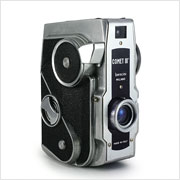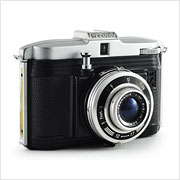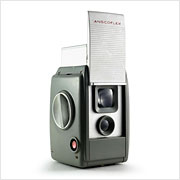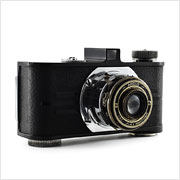Bencini Comet III
The Bencini Comet III is an unconventional viewfinder camera built for the 127 film format introduced in 1953 by Italian manufacturer Bencini as the latest model to bear the Comet name. This camera was sold as the Bencini Akrom I in the South American market and also has another clone called, confusingly, the Comet 3 (using Arabic numerals instead of Roman) which features a white pinstriped faceplate along with an unfocusable lens. Unlike its predecessors such as the original Comet and Comet II which feature a more traditional design, the Comet III is vertically oriented which helps set it apart from other Bencinis as well as the overwhelming majority of other cameras from its day.




